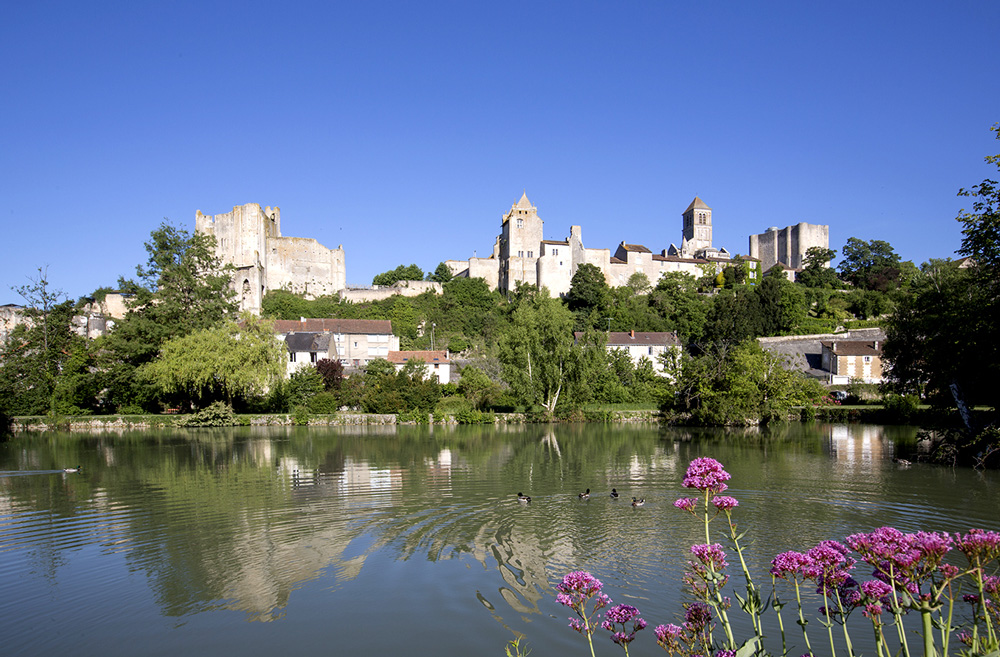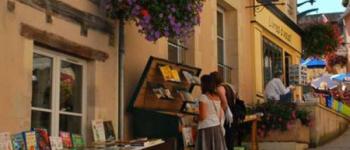
Twenty minutes from Futuroscope or Poitiers in the Vienne, a medieval city, very rich, surprising, Chauvigny is famous first of all for its famous "Chauvigny stone" which dresses prestigious works, or the "Chauvigny porcelain", present on the most beautiful tables of France and the world.
Chauvigny is also famous for its streets and alleys, the remains of its five castles, the powerful castle of the Bishops, residence of the lords of Chauvigny, those of the fortress of Montléon, dominating the city, the imposing castle of Harcourt in a very good state of conservation which shelters many cultural or educational activities, the Donjon of Gouzon rehabilitated into a museum, which offers a superb panoramic view without forgetting the modest castle of Flins, a private building.
Chauvigny is also home to masterpieces of Romanesque and pre-Romanesque art, notably the frescoes of Saint Pierre les Églises, composed of ten scenes, and the collegiate church of Saint Pierre, a true gem of Romanesque art.
The Museum of Popular Traditions and Archaeology
The museum is located in a 17th century house. The first floor is dedicated to popular traditions: it hosts the restitution of a Poitou interior, collections of headdresses, clothes and objects of daily life in Poitou at the end of the 19th century. On the second floor, the archaeological collections come from Gallo-Roman sites, Saint-Pierre les Églises in Chauvigny and the Gué de Sciaux in Antigny (exceptional exhibition of 1st century ceramics) and, for the medieval period, from the castles of Montléon, Gouzon and the baronial castle of Chauvigny. On the second floor, the room of the trades shelters the tools of the clog maker, the tinsmith, the cooper, the sawyer of long, etc... .
The Space of Industrial Archaeology
Installed in a XIIth and XIIIth century dungeon, the industrial archaeology space presents :
- the stone of Chauvigny with works and tools of quarrymen and stonecutters,
- the arts of fire with collections of Chauvigny porcelain (Apilco), flamed stoneware (1900-1930), 19th century earthenware, Saintonge earthenware (16th-18th centuries),
- works of ceramic artists: Alexandre Bigot (1862-1927), Peyrat, Legros, Orellana, D'Orefice... and testimonies of crafts (tile making, glass making, metal working),
- the quest for energy with a showcase "From the sun to the lamp", a steam engine - 1907, a model of a thermonuclear power station (1990).
The Giants of the Sky, the bicycle-rail and others...
The castle of the Bishops, in the heart of the medieval city, houses a "high-flying" show in which birds of prey evolve but also birds from all over the world.
The "Giants of the Sky" are one of the highlights of tourism in the department.
In Chauvigny, many nature activities are proposed with a bicycle-rail ride to visit in an original way the landscapes of the Chauvinois country, but also many hikes.
Without forgetting the activities around water with descents on the Vienne in canoe-kayak, swimming pool or the base of leisures in La Puye.
Not forgetting the art craftsmen of the medieval city who welcome you in their shops: potter, sculptor, medieval stores, leather work... and
the local gastronomy with the markets, the food shops and the specialities of the restaurant owners.
Chauvigny is classified among the most beautiful detours of France...
Tourist Information Office of Chauvigny
Tourist information points
12, rue Geisenheim
86300 Chauvigny
Tel : 05 49 46 39 01
info@visitpoitiers.fr
Translated with www.DeepL.com/Translator
(free version)






